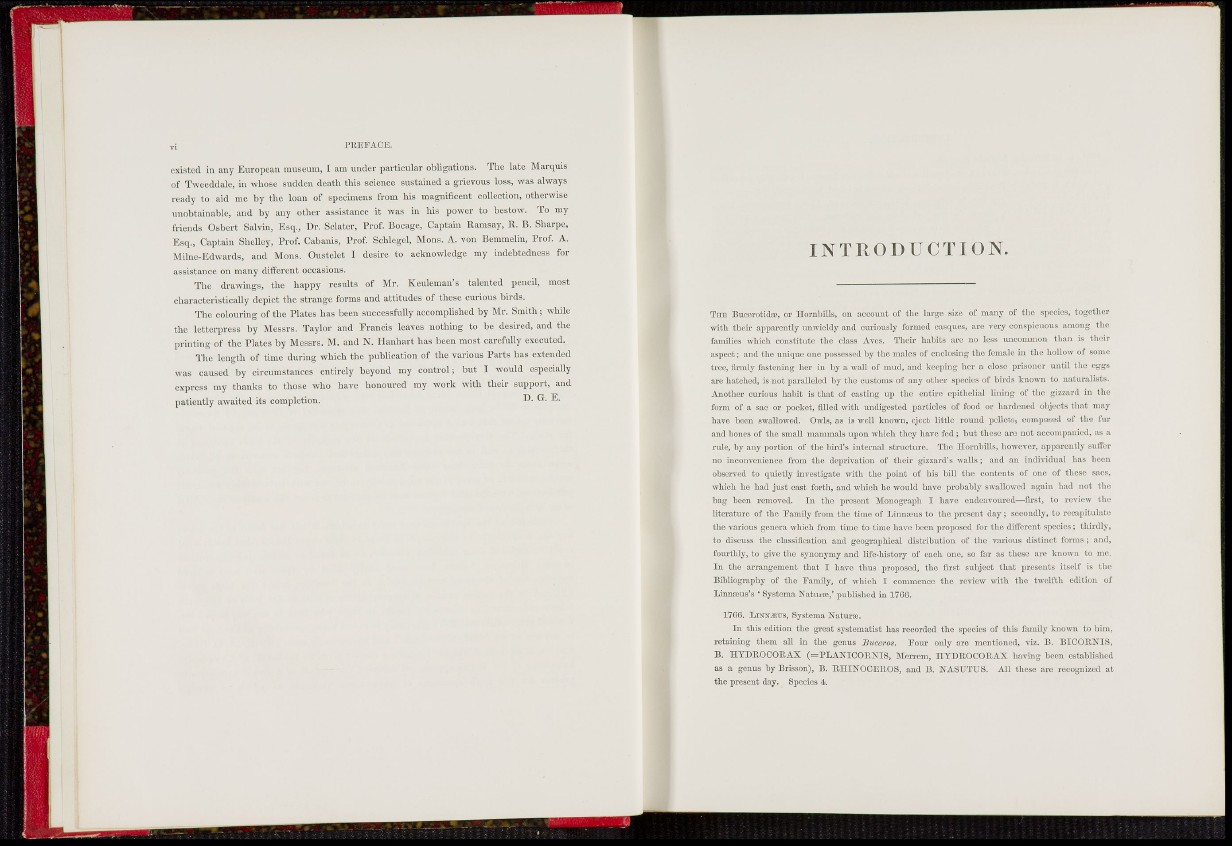
existed in any Enropean museum, I am under particular obligations. The late Marquis
of Twceddale, in whose sudden death this science sustained a grievous loss, was always
ready to aid me by the loan of specimens from his magnificent collection, otherwise
miobtainable, and by any other assistance it was in his power to bestow. To my
friends Osbert Sahin, Esq., Dr. Sclater, Prof. Socage, Captain Ramsay, R. B. Sharpe,
Esq., Captain Shelley, Prof. Cabanis, Prof. Schlegel, Möns. A. von Bemmclin, Prof. A.
Milne-Edwards, and Möns. Oustelet I desire to acknowledge my indebtedness for
assistance on many diiierent occasions.
The drawings, the happy results of Mr. Keuleman's talented pencil, most
characteristically depict the strange forms and attitudes of these curious birds.
The colouring of the Plates has been successfully accomplished by Mr. Smith; while
the letterpress by Messrs. Taylor and Francis leaves nothing to be desired, and the
printing of the Plates by Messrs. M. and N. Hanhart has been most carefully executed.
The length of time during which the pubhcation of the Tarious Parts has extended
was caused by circumstances entirely beyond my control; but I would especially
express my thanks to those who have honoured my work with their support, and
patiently awaited its completion. G. E.
INTRODUCTION.
THE Bucerotidfe, or Hornliills, on account of tlic largo size of many of the spceics, together
•with then- apparently unwieldy and curiously formed casques, are very conspicuous among the
families which constitute the class Aves. Their habits are no less uncommon than is their
aspect; and the unique one possessed by the males of enclosing the female in the hollow of some
tree, firmly fastening her in by a wall of mud, and keeping her a close prisoner until the eggs
are hatched, is not pai-allelcd by tlie customs of any other species of birds known to naturalists.
Another curious habit is that of casting up the entire epithelial lining of the gizzard in the
form of a sac or pocket, filled -with undigested particles of food or hardened objects that may
have been swallowed. Owls, as is well known, ejcct little round pellets, composed of the fur
and bones of the small mammals upon which they have fed; but these are not accompanied, as a
rule, by any portion of the bird's interaal structure. The Uornbills, however, apparently suffer
no inconvenience from the deprivation of their gizzard's walls; and an individual has been
observed to quietly investigate with the point of his bill the contents of one of these sacs,
which he had just cast forth, and which ho would have probably swallowed again had not the
bag been removed. In tlie present llonograph I have endeavoured—first, to review the
literature of the Family from the time of Linnajus to the present day; secondly, to recapitulate
the various genera which from time to time have been proposed for the different species; thirdly,
to discuss the classification and geographical distribution of tho various distinct forms; and,
fourthly, to give the synonymy and life-history of each one, so far as these are known to me.
In the an-angement that I have thus proposed, the first subject that presents itself is the
Bibliography of the Family, of which I commence the review with the twelfth edition of
Linnjeus's ' Systema Natuifc,' published in 1766.
1766. Liy>-iEUS, Systema Nature.
In this edition the great systematist has recorded the species of this family known to him,
retaining them all in the genus Buecroa. Four only are mentioned, viz. 15. BICOEisIS,
B. HYDROCOEAX (=PLAaS'ICOE,lS'IS, Mcrrem, IIYDEOCORAX having been established
as a genus by Brisson), B. EHIKOCEHOS, and 3. KASUTUS. All these are recognized at
the present day. Species di.